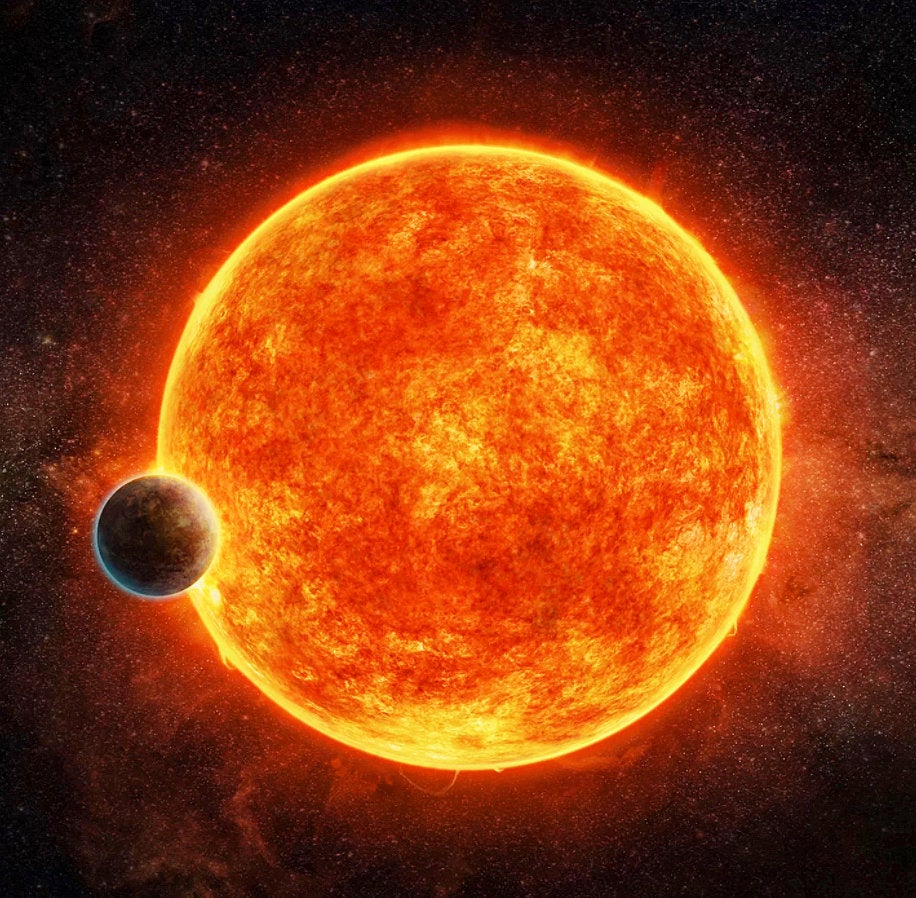NASA's Hubble Space Telescope has detected water in the atmospheres of five planets beyond our solar system, two recent studies reveal.
The five exoplanets with hints of water are all scorching-hot, Jupiter-size worlds that are unlikely to host life as we know it. But finding water in their atmospheres still marks a step forward in the search for distant planets that may be capable of supporting alien life, researchers said.
"We're very confident that we see a water signature for multiple planets," Avi Mandell, of NASA's Goddard Space Flight Center in Greenbelt, Md., lead author of one of the studies, said in a statement. "This work really opens the door for comparing how much water is present in atmospheres on different kinds of exoplanets — for example, hotter versus cooler ones." [?The Strangest Alien Planets (Gallery)]
The atmospheres of all five planets showed signs of water, with the strongest signatures found in the air of WASP-17b and HD209458b.
"To actually detect the atmosphere of an exoplanet is extraordinarily difficult. But we were able to pull out a very clear signal, and it is water," Drake Deming of the University of Maryland, lead author of the other recent study, said in a statement.
Water is thought to be a common constituent of exoplanet atmospheres and has been found in the air of several other distant worlds to date. But the new work marks the first time scientists have measured and compared profiles of the substance in detail across multiple alien worlds, researchers said.
 This NASA graphic shows how astronomers determine what is in the atmosphere of an exoplanet. Astronomers track the planet as it passes in front of its host star and study which wavelengths of light are absorbed.
This NASA graphic shows how astronomers determine what is in the atmosphere of an exoplanet. Astronomers track the planet as it passes in front of its host star and study which wavelengths of light are absorbed.
The water signatures were less intense than expected in all cases, likely because the five hot Jupiters are surrounded by a haze of dust, researchers said.
"These studies, combined with other Hubble observations, are showing us that there are a surprisingly large number of systems for which the signal of water is either attenuated or completely absent," Heather Knutson of the California Institute of Technology in Pasadena, a co-author on Deming's paper, said in a statement. "This suggests that cloudy or hazy atmospheres may in fact be rather common for hot Jupiters."
The study led by Mandell came out today (Dec. 3) in The Astrophysical Journal, while the paper led by Deming was published in September in the same journal.
Follow Mike Wall on Twitter @michaeldwall and Google+. Follow us @Spacedotcom, Facebook or Google+. Originally published on SPACE.com.
Copyright 2013 SPACE.com, a TechMediaNetwork company. All rights reserved. This material may not be published, broadcast, rewritten or redistributed.
Support HuffPost
Our 2024 Coverage Needs You
Your Loyalty Means The World To Us
At HuffPost, we believe that everyone needs high-quality journalism, but we understand that not everyone can afford to pay for expensive news subscriptions. That is why we are committed to providing deeply reported, carefully fact-checked news that is freely accessible to everyone.
Whether you come to HuffPost for updates on the 2024 presidential race, hard-hitting investigations into critical issues facing our country today, or trending stories that make you laugh, we appreciate you. The truth is, news costs money to produce, and we are proud that we have never put our stories behind an expensive paywall.
Would you join us to help keep our stories free for all? Your contribution of as little as $2 will go a long way.
Can't afford to donate? Support HuffPost by creating a free account and log in while you read.
As Americans head to the polls in 2024, the very future of our country is at stake. At HuffPost, we believe that a free press is critical to creating well-informed voters. That's why our journalism is free for everyone, even though other newsrooms retreat behind expensive paywalls.
Our journalists will continue to cover the twists and turns during this historic presidential election. With your help, we'll bring you hard-hitting investigations, well-researched analysis and timely takes you can't find elsewhere. Reporting in this current political climate is a responsibility we do not take lightly, and we thank you for your support.
Contribute as little as $2 to keep our news free for all.
Can't afford to donate? Support HuffPost by creating a free account and log in while you read.
Dear HuffPost Reader
Thank you for your past contribution to HuffPost. We are sincerely grateful for readers like you who help us ensure that we can keep our journalism free for everyone.
The stakes are high this year, and our 2024 coverage could use continued support. Would you consider becoming a regular HuffPost contributor?
Dear HuffPost Reader
Thank you for your past contribution to HuffPost. We are sincerely grateful for readers like you who help us ensure that we can keep our journalism free for everyone.
The stakes are high this year, and our 2024 coverage could use continued support. If circumstances have changed since you last contributed, we hope you’ll consider contributing to HuffPost once more.
Already contributed? Log in to hide these messages.
 This NASA graphic shows how astronomers determine what is in the atmosphere of an exoplanet. Astronomers track the planet as it passes in front of its host star and study which wavelengths of light are absorbed.
This NASA graphic shows how astronomers determine what is in the atmosphere of an exoplanet. Astronomers track the planet as it passes in front of its host star and study which wavelengths of light are absorbed.